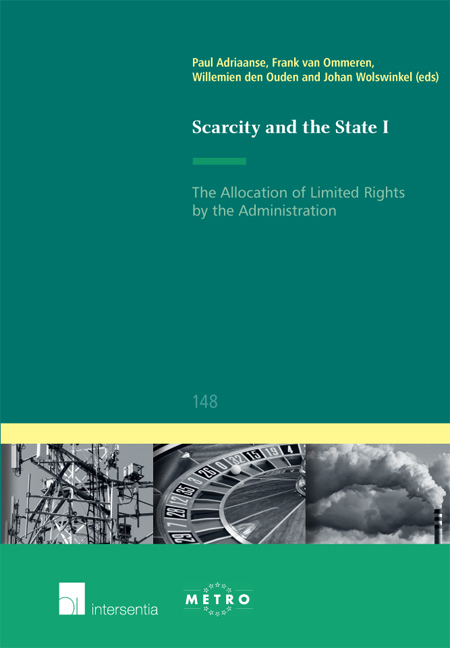Book contents
- Frontmatter
- Foreword
- Editors’ Preface
- Contents
- Part I General Perspectives
- Part II Eu Law Perspectives
- Part III Comparative Law Perspectives
- Chapter 12 ‘Let It Be’? The Regulation and Allocation of Gambling Licences at the EU and Member State Level
- Chapter 13 The Allocation of Radio Frequencies; Overview of Spectrum Policy and Regulation in Europe
- Chapter 14 The Allocation of Emission Rights
- List of Contributors
- Ius Commune Europaeum
Chapter 14 - The Allocation of Emission Rights
from Part III - Comparative Law Perspectives
Published online by Cambridge University Press: 22 September 2018
- Frontmatter
- Foreword
- Editors’ Preface
- Contents
- Part I General Perspectives
- Part II Eu Law Perspectives
- Part III Comparative Law Perspectives
- Chapter 12 ‘Let It Be’? The Regulation and Allocation of Gambling Licences at the EU and Member State Level
- Chapter 13 The Allocation of Radio Frequencies; Overview of Spectrum Policy and Regulation in Europe
- Chapter 14 The Allocation of Emission Rights
- List of Contributors
- Ius Commune Europaeum
Summary
Introduction
This chapter will focus on the rules and principles to the allocation of CO2 emission allowances in the EU and selected Member States i.e. France, Germany, Greece, Italy, Romania, Spain and the Netherlands. It will seek to address the conceptual distinctions as set out in Chapter 1(3) on what is allocated, how it is allocated and which form the allocated rights are granted in this specific field of law. Emission trading is characterised by an almost complete Europeanisation in the sense that European Union (EU) legislation governs almost completely the allocation of emissions rights and has during its existence been amended to leave very limited room for individual national legislation. Therefore this chapter devotes most attention to EU governance and gives a fairly detailed account of the EU emission trading system as developed under amended directives. It will, however, not consider the Member State reports separately but rather contextualize the EU rules and principles by providing examples of the implementation at the national level and practice based upon national reports.
First this chapter will highlight briefly the policy developments within the area of climate change and emission trading (Section 2) and then focus on the emission trading concept as such (Section 3). The need for applying for an emission permit is examined under Section 4, whereas the allocation of allowances is discussed under Section 5. Then follows under Section 6, a description of the control and enforcement instruments, and thereafter under Section 7 the linking of the emission trading system to the international flexible mechanisms. Finally, Section 8 completes the chapter with a brief conclusion.
Policy Developments
The United Nation Framework Convention on Climate Change (UNFCCC) was ratified by the then European Community in 1994 and the Kyoto Protocol in 2002. The European Union (EU) has been at the forefront of international efforts towards the adoption of the global climate deal at the Paris climate conference (COP21) in December 2015. The Paris agreement will be opened for signature on 22 April 2016 and is due to enter into force in 2020.
- Type
- Chapter
- Information
- Scarcity and the StateThe Allocation of Limited Rights by the Administration, pp. 341 - 352Publisher: IntersentiaPrint publication year: 2016

